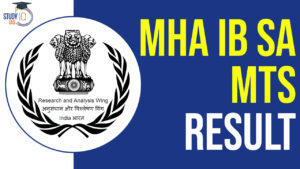Daily Current Affairs for UPSC 2023
Q) Recently seen in news, the term ‘LockBit’ is best related to which one of the following?
- A newly developed space rocket
- A software developed for ChatGPT
- A ransomware specifically designed to target Apple computers
- A near-earth asteroid recently spotted by James Webb Telescope
Daily Current Affairs for UPSC – 22 April 2023
Explanation:
- Option (3) is correct: Recent reports have observed that the LockBit Ransomware is targeting Mac devices. LockBit is the first major ransomware that is specifically designed to target Apple computers. It can target both older Macs and newer ones running on Apple Silicon. LockBit was first detected in 2019 and has been dubbed the “abcd” virus, due to the file extension used when encrypting victim’s files. It is run by LockBit gang. It has been categorised as a “crypto virus” as its requests for payment in cryptocurrency to decrypt files. The ransomware targets individuals who feel hindered enough by the disruption and can afford to pay heavy sums in exchange for access to the files. The ransomware uses social engineering tactics to impersonate trusted personnel or authorities to lure victims into sharing personal credentials. It sometimes uses brute force to gain access to the intranet server and network of an organisation. Ransomware is a type of malicious software that can infect a computer system by blocking access to the stored data by encrypting the files. The perpetrator then demands ransom from the owner in exchange for the decryption key.
Q) With reference to ballistic missile, consider the following statements:
- It is fired into space before striking the target by re-entering the atmosphere.
- India’s Agni-V missile is an example of an endo-atmospheric ballistic missile.
- Air Defense-1 is a medium-range interceptor missile jointly developed by India and Israel.
Which of the statements given above is/are correct?
- 1 only
- 1 and 2 only
- 2 and 3 only
- 1, 2 and 3
Explanation:
- Statement 1 is correct: Ballistic missiles are weapons that can carry a nuclear or conventional warhead over thousands of kilometres before hitting their target. These missiles are launched into space before re-entering the atmosphere and hitting their target. They have been used in many conflicts around the world and are considered one of the most dangerous weapons in modern warfare.
- Statement 2 is incorrect: Endo-atmospheric missiles are designed to intercept and destroy incoming ballistic missiles within the Earth’s atmosphere. They operate at an altitude below 100 kilometres. India’s AD-1 missile is an example of an endo-atmospheric missile. Exo-atmospheric missiles are designed to intercept and destroy incoming ballistic missiles outside the Earth’s atmosphere. They operate at an altitude above 100 kilometres. India’s Agni-V missile is an example of an exo-atmospheric missile.
- Statement 3 is incorrect: In November, India successfully conducted the maiden flight-test of phase-II ballistic missile defence interceptor Air Defence-1 (AD-1) that is capable of engaging many different types of targets. The AD-1 is a long-range interceptor missile designed for both “low exo-atmospheric” and “endo-atmospheric” interceptions of long-range ballistic missiles as well as aircraft. Air Defence-1 (AD-1) is a part of India’s Ballistic Missile Defence (BMD) program. It is a long-range interceptor missile designed to strike down incoming missiles and aircraft.
Q) Consider the following statements about Contempt of Court:
- Civil contempt occurs when someone interferes with the administration of justice.
- Willful disobedience of a court order is considered criminal contempt of the court.
- The Supreme Court also has the authority to punish for contempt of tribunals.
Which of the statements given above is/are correct?
- 1 and 2 only
- 1 and 3 only
- 2 and 3 only
- 3 only
Explanation:
- Statements 1 and 2 are incorrect: The Delhi High Court has held a bureaucrat of the Delhi Government guilty of contempt of Court. The Contempt of Courts Act, 1971 defines the power of courts to punish for their contempt and regulates their procedure. According to it, contempt refers to the offence of showing disrespect to the dignity or authority of a court. It defines both civil and criminal contempt:
- Civil contempt is the willful disobedience of a court order or judgement, or willful breach of an undertaking given to a court.
- Criminal contempt is written or spoken words or any act that scandalizes the court or lowers its authority or prejudices or interferes with the due course of a judicial proceeding or interferes/obstructs the administration of justice.
- Statement 3 is correct: The Supreme Court and high courts have the power to punish for contempt of court, either with simple imprisonment for a term up to six months or with fine up to 2,000 or with both. In 1991, the Supreme Court has ruled that it has the power to punish for contempt not only of itself but also of high courts, subordinate courts and tribunals functioning in the entire country. On the other hand, High Courts have been given special powers to punish contempt of subordinate courts, as per Section 10 of The Contempt of Courts Act of 1971.
Q) Consider the following statements:
- It is part of the Khathiar-Gir tropical dry deciduous forests.
- The Kardhai, Khair and Salai trees dominate this area.
- One of the main tributaries of the Chambal River cuts through this area.
- The Saharia tribe lives in the area surrounding this park.
Which of the following National Park is best described in the statements given above?
- Kuno National Park
- Kanha National Park
- Sanjay National Park
- Van Vihar National Park
Explanation:
- Option (1) is correct: A male cheetah that strayed out of the Kuno National Park in Madhya Pradesh has been rescued. Kuno National Park is a national park in the Sheopur district of Madhya Pradesh (MP). It was established in 1981 as a wildlife sanctuary. In 2018, it was given the status of a national park. It is part of the Khathiar-Gir tropical dry deciduous forests. The vegetation is dominated by the “Kardhai”, “Khair” and “Salai” trees. It is mainly a grassland area. Kuno National Park has spread over an area of 748.76 sq. km. One of the main tributaries of the Chambal River, the Kuno River, cuts across the National Park. Indian wolves, jackals, leopards, langur primates, blue-bull, chinkara, and spotted deer are all present in Kuno National Park. Wildlife Institute of India and Wildlife Trust of India had shortlisted Kuno-Palpur as a potential habitat for Cheetahs and Asiatic lions. Eight cheetahs from Namibia and 12 from South Africa were transported to India and introduced at Kuno National Park (KNP). People near the National Park mainly belong to the Saharia tribe.
Q) With reference to Panchayati Raj Institutions, consider the following statements:
- The Montagu-Chelmsford Reforms of 1919 led to development of the election process in the local self-government structure in India.
- The G.V.K. Rao Committee recommended making the district the basic unit of planning, while the L.M. Singhvi Committee recommended providing constitutional status to the panchayats.
Which of the statements given above is/are correct?
- 1 only
- 2 only
- Both 1 and 2
- Neither 1 nor 2
Explanation:
- Statement 1 is incorrect: The Panchayati Raj Institution (PRI) is a system of rural local self-government in India, which involves the management of local affairs by elected local bodies.
- It aims to build democracy at the grassroots level and promote rural development in the country. Since its constitutionalization through the 73rd Constitutional Amendment Act in 1992, PRI has been in existence for over three decades. The British regime weakened the village panchayats in India. Morley Minto Reforms of 1909 incorporated the recommendations of Royal Commission on Decentralization (1907) which led to the enlargement of the election process in the Local Self Government structure in India. Montagu Chelmsford reforms of 1919, introduced a dyarchy system where responsibility of the local government was given to ministers and the ministers enacted a number of laws to revive the Panchayati raj institutions.
- Statement 2 is correct: Balwant Rai Mehta Committee recommended a three-tier system of Panchayati Raj Institutions (PRIs) consisting of Grama Panchayats, Panchayat Samiti, and Zilla Parishad to promote democratic decentralization. Ashok Mehta Committee of 1977 led to new thinking on the concept and practice of Panchayati Raj. The committee recommended a two-tier structure consisting of Zilla Parishad and Mandal Panchayat. The G.V.K. Rao Committee recommended making the district the basic unit of planning and holding regular elections, while the L.M. Singhvi Committee recommended providing more financial resources and constitutional status to the panchayats.


 SSC Stenographer 2024 Notification Out a...
SSC Stenographer 2024 Notification Out a...
 IB SA MTS Final Result 2024 Out at mha.g...
IB SA MTS Final Result 2024 Out at mha.g...
 Model Skill Loan Scheme, Eligibility, Re...
Model Skill Loan Scheme, Eligibility, Re...

















